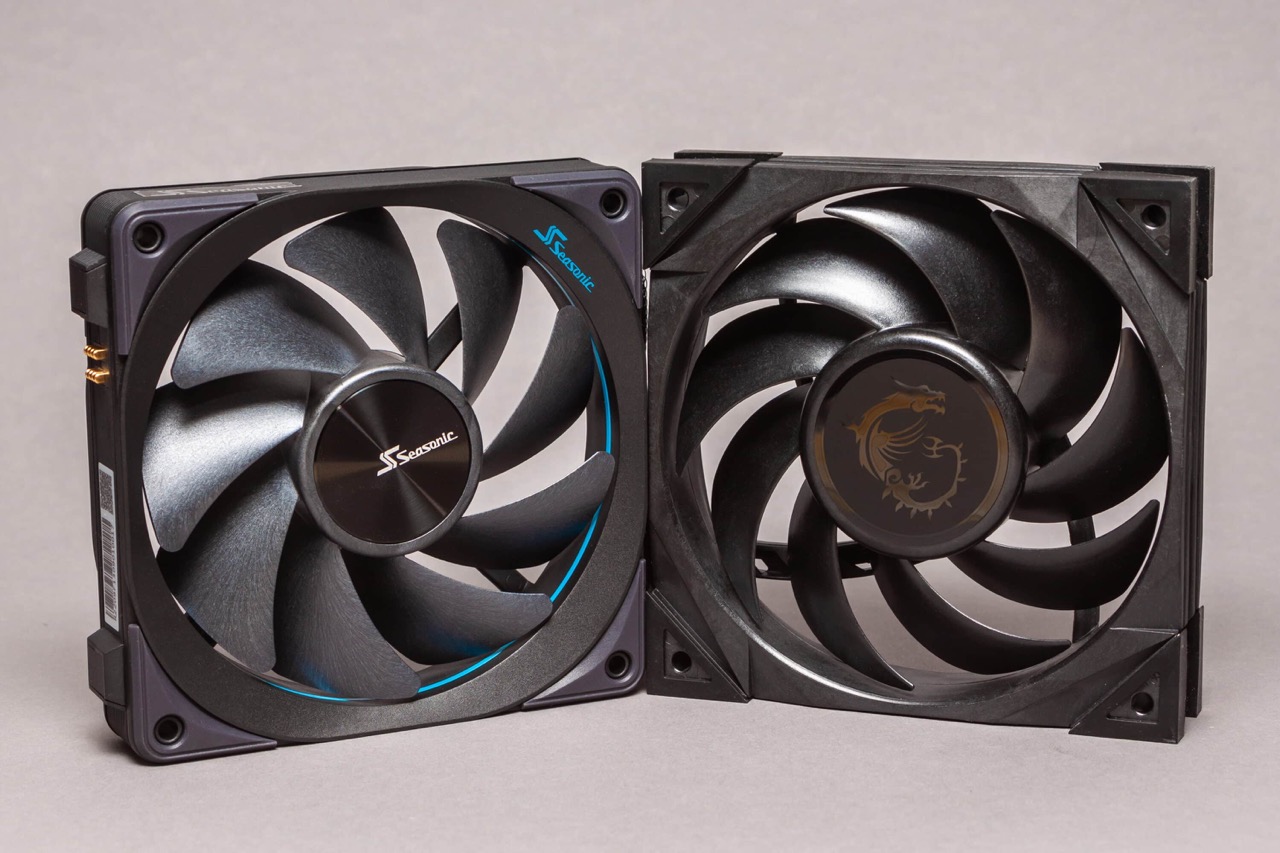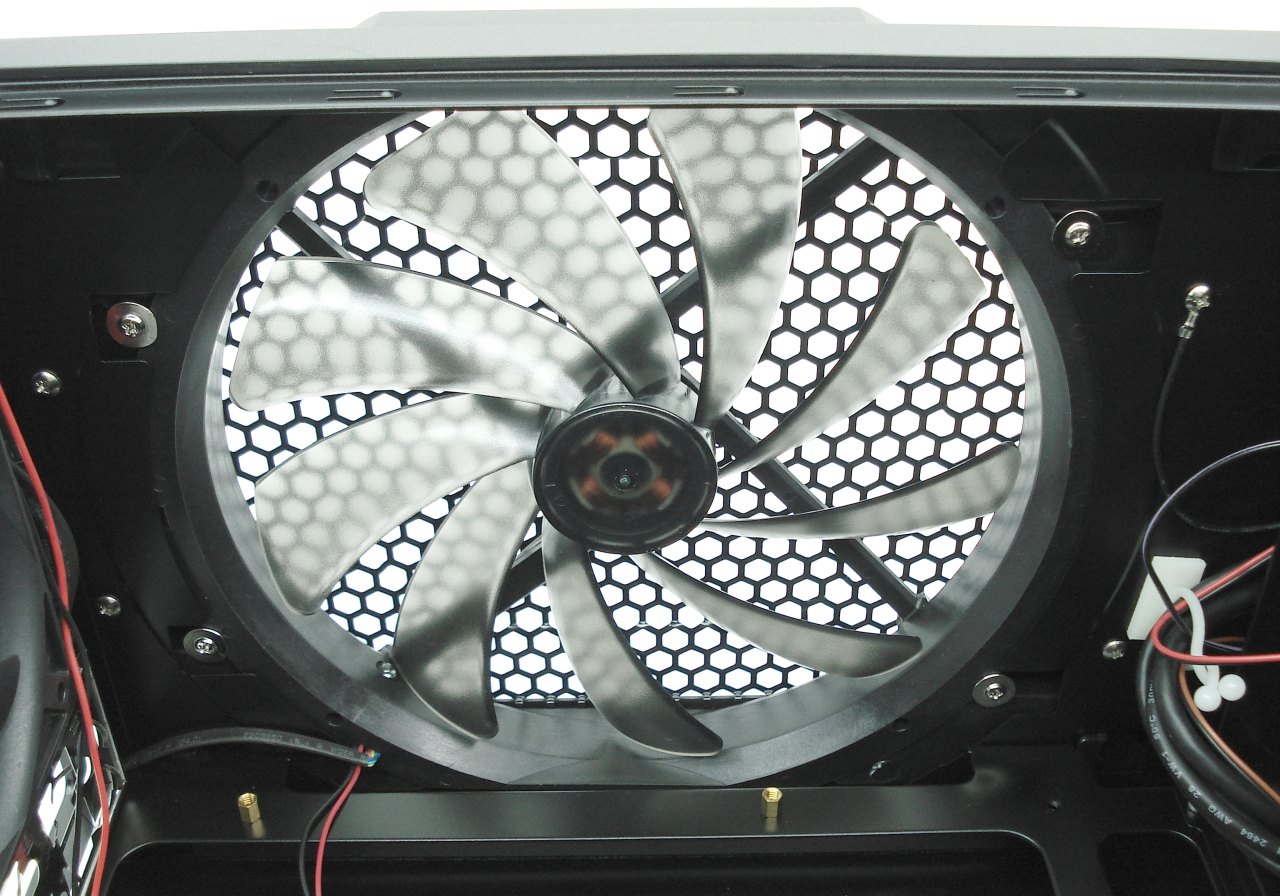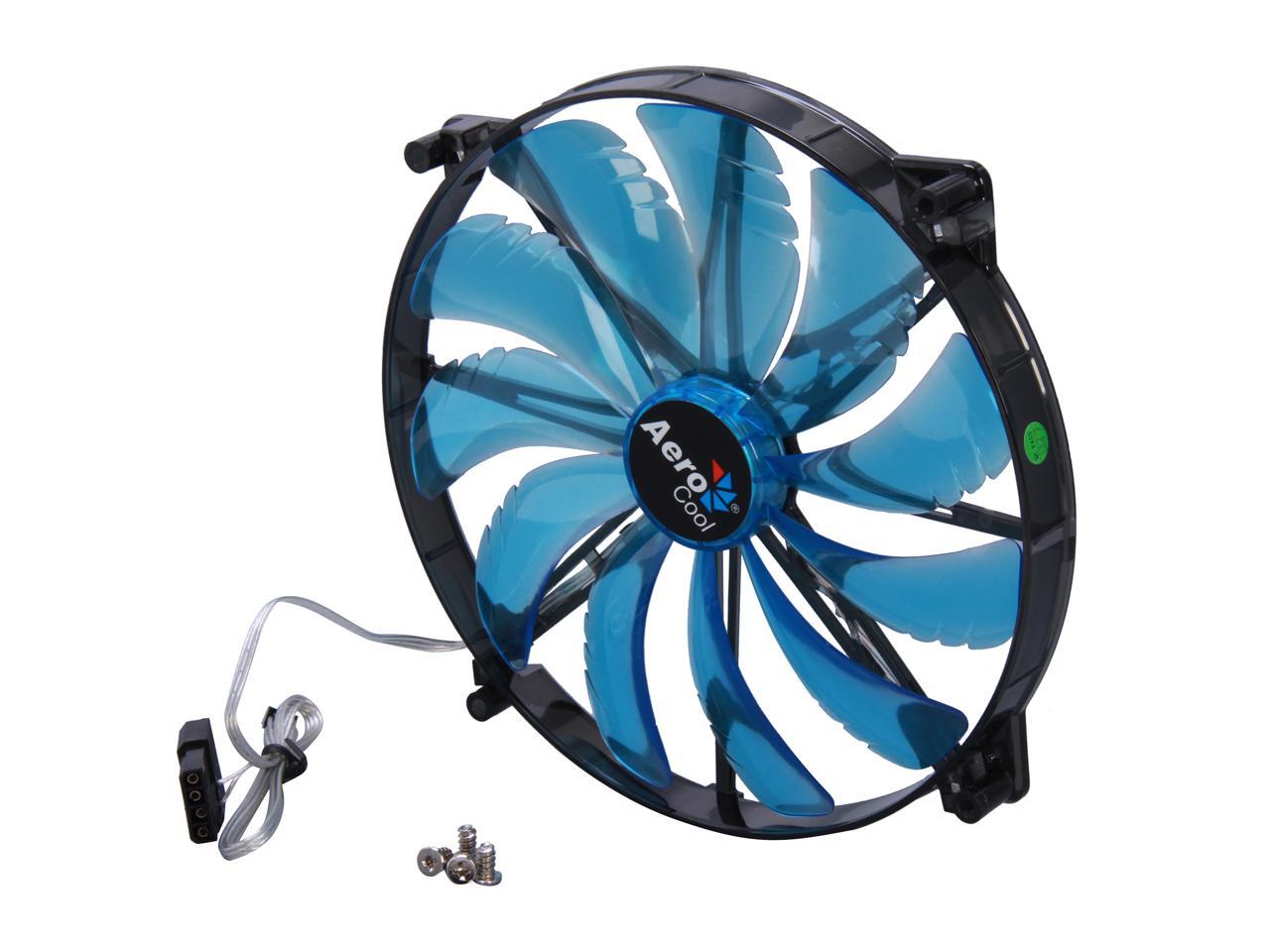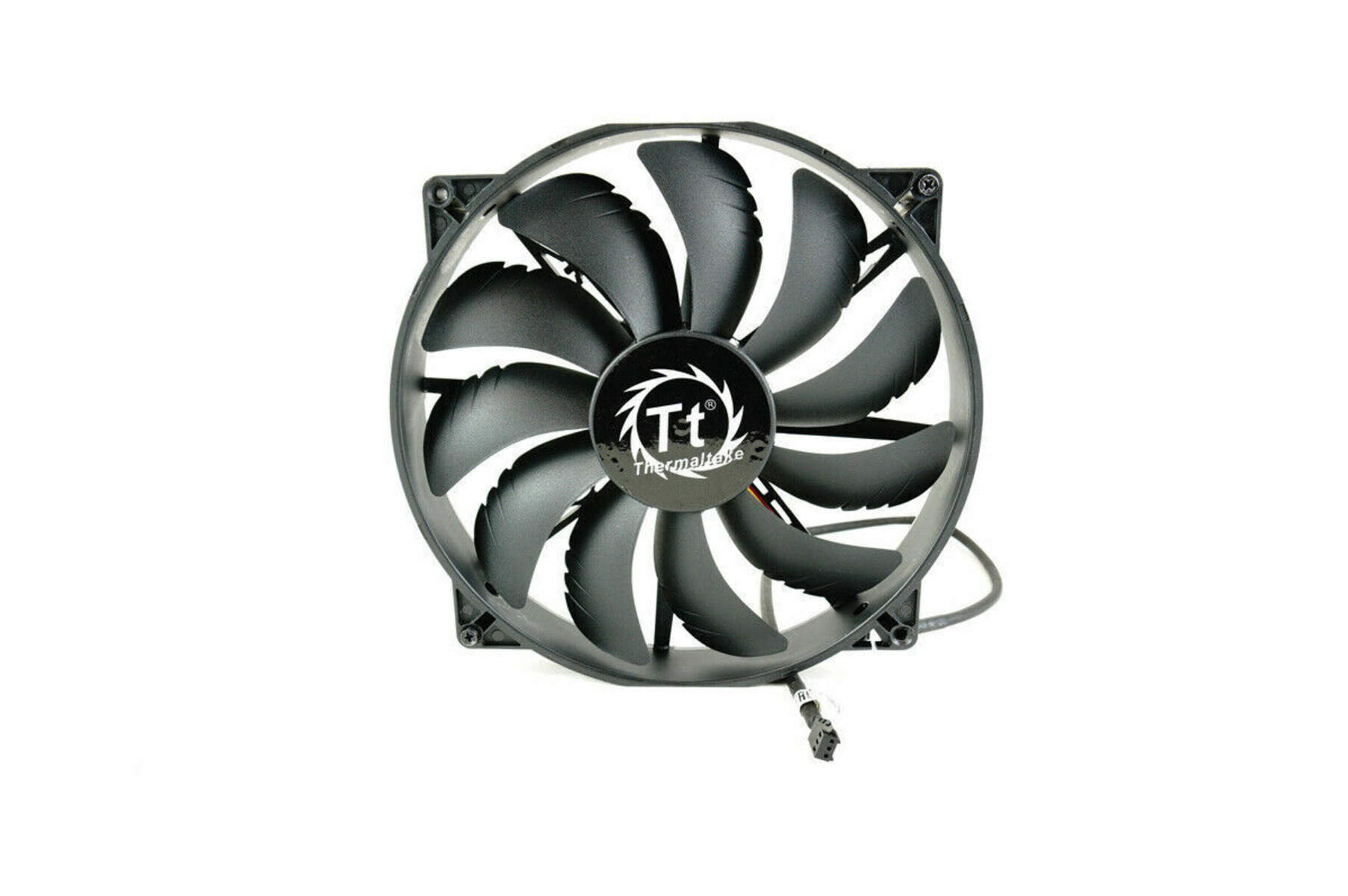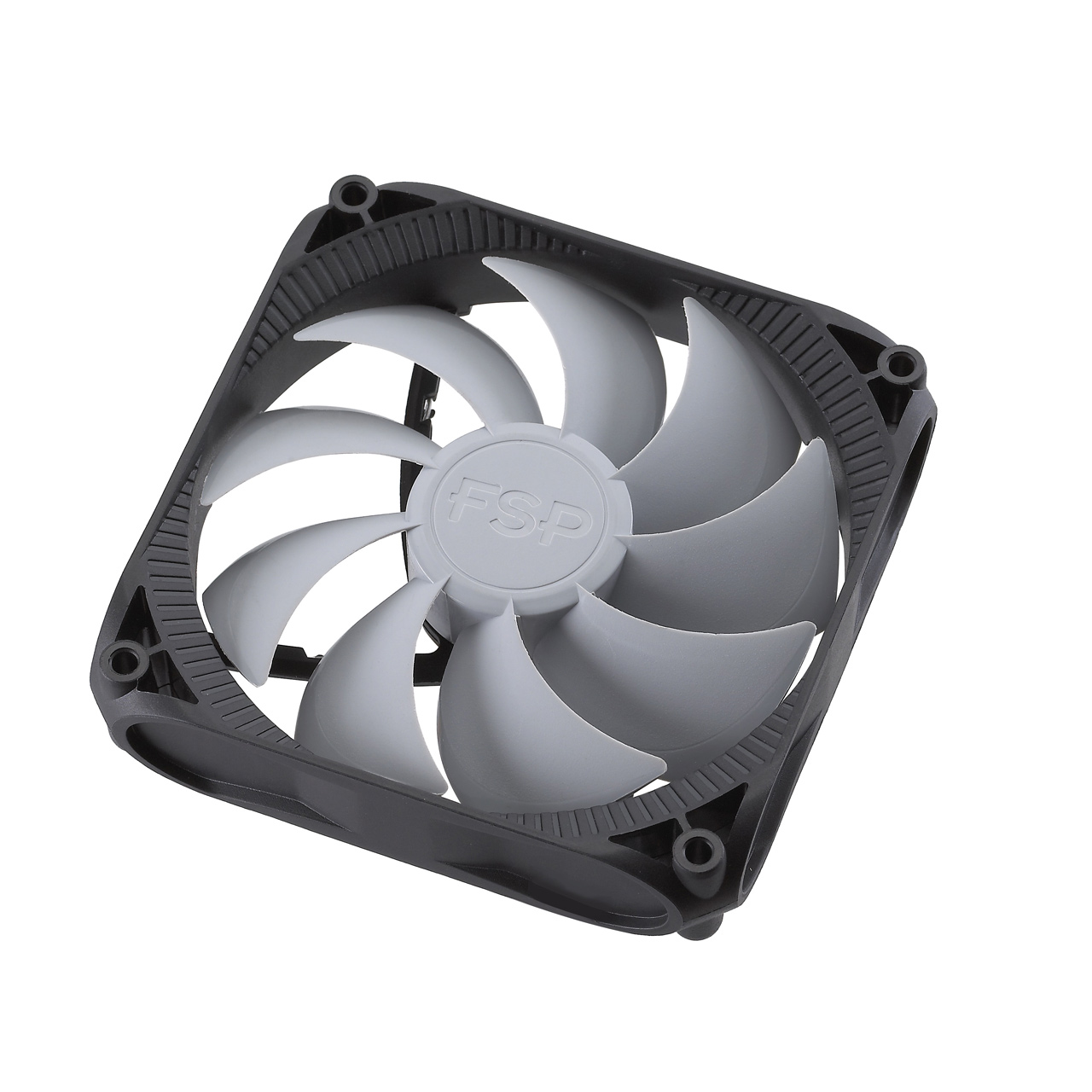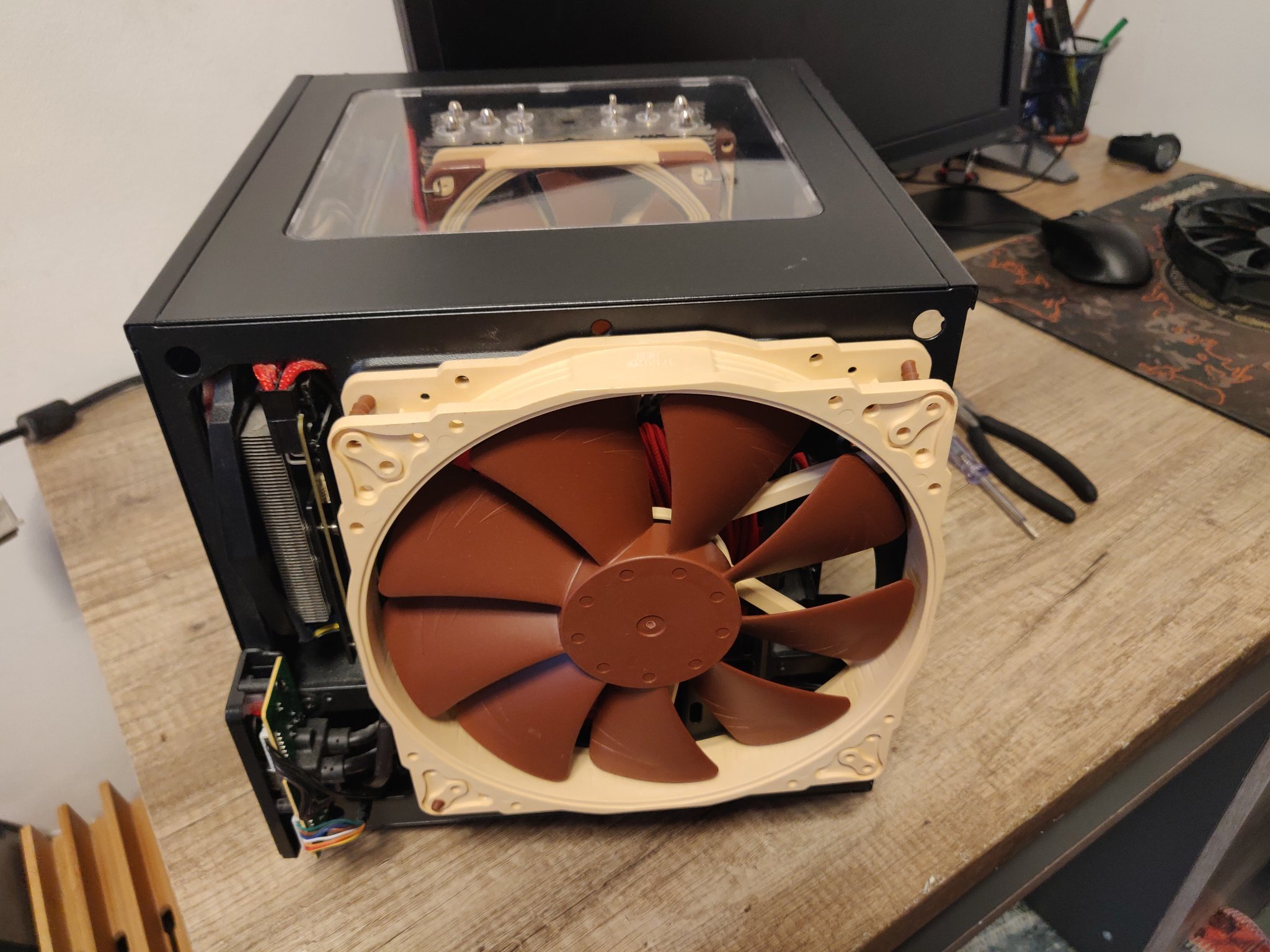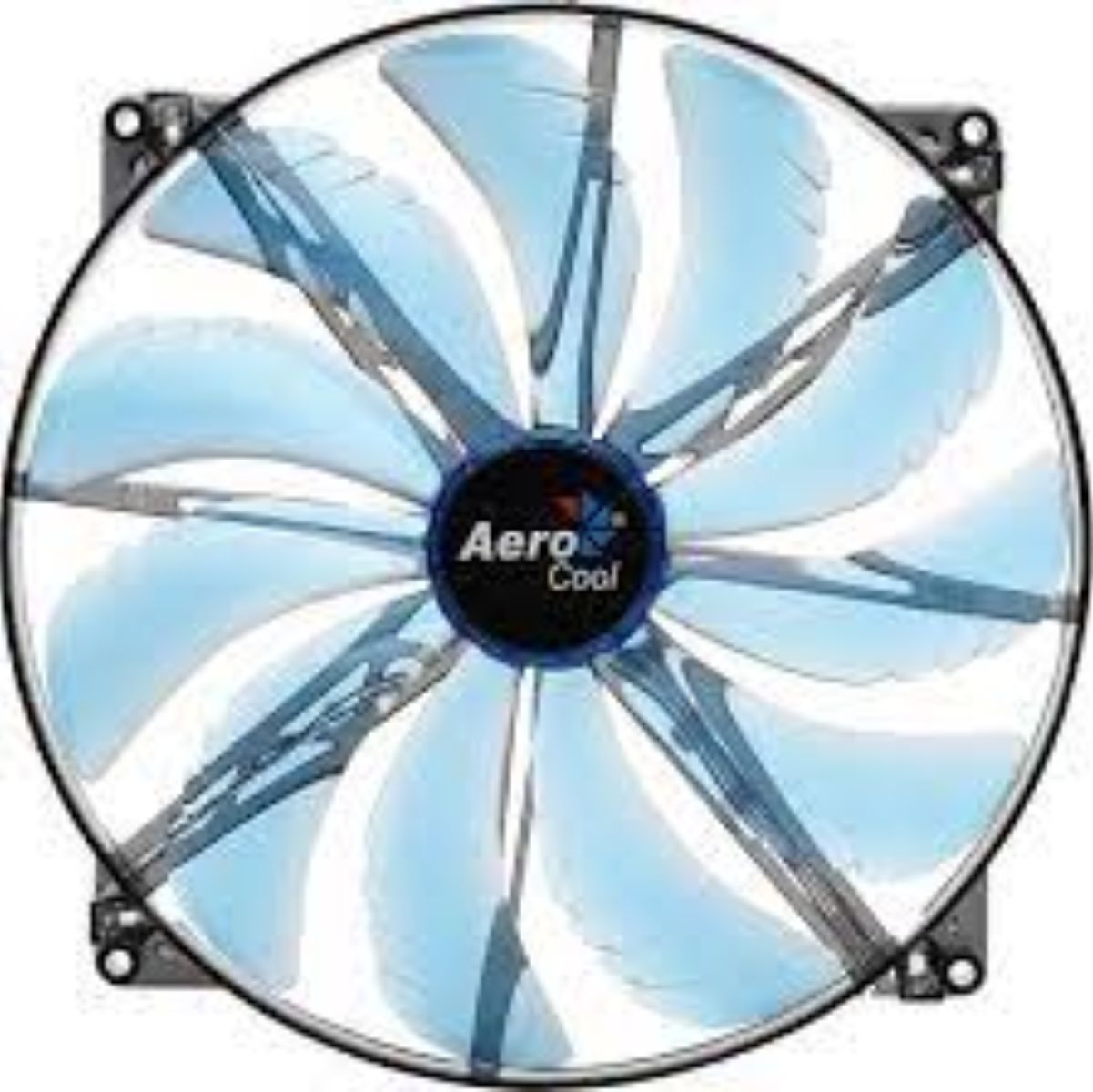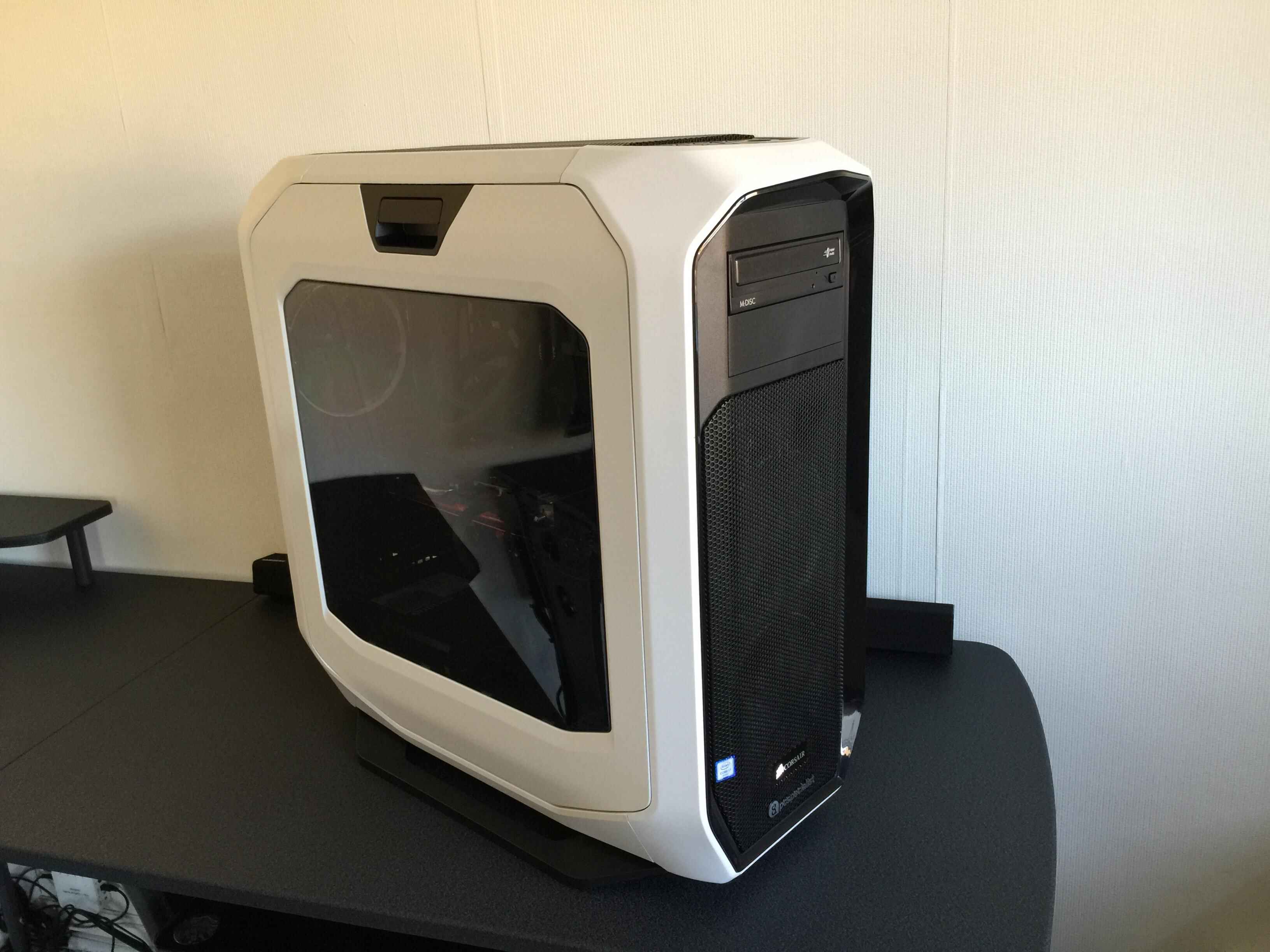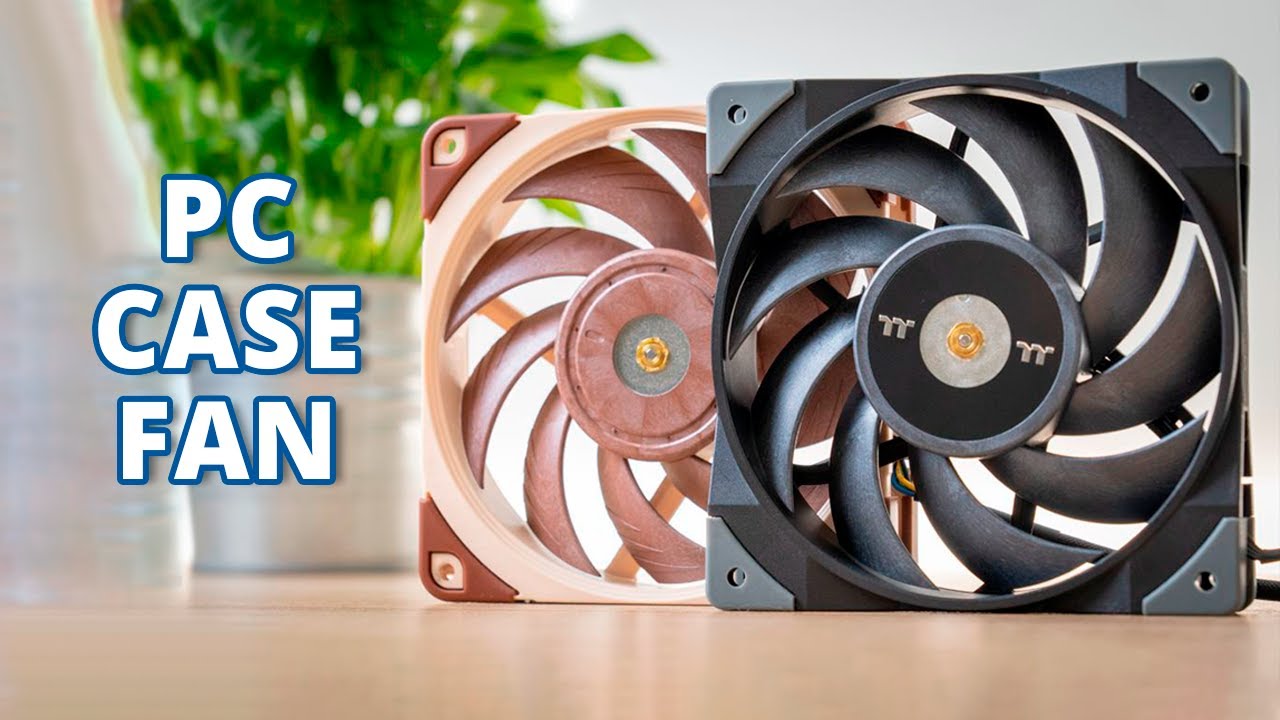Introduction
Welcome to the world of PC cooling and airflow! If you’ve ever built or upgraded a computer, you know how crucial it is to keep your system cool to maximize its performance and lifespan. One of the key components in achieving optimal cooling is the case fan. These fans help to circulate air inside your computer case, dissipating heat generated by various components such as the CPU and GPU.
In this article, we’ll be diving into the world of 200mm case fans. These larger-sized fans have gained popularity among PC enthusiasts and gamers due to their ability to move a significant amount of air while maintaining relatively low noise levels. We’ll explore the topic of how much airflow a 200mm case fan produces and discuss the factors that influence this airflow. Additionally, we’ll highlight the importance of good airflow in a PC case and the benefits of using a 200mm case fan.
So, if you’re curious about improving your computer’s cooling capabilities or considering upgrading to a 200mm case fan, keep reading to get a better understanding of just how much airflow these fans can provide.
What is a 200mm case fan?
A 200mm case fan is a type of computer cooling fan with a diameter of 200 millimeters. It is larger compared to the more common 120mm and 140mm case fans. The larger size allows it to move a larger volume of air while maintaining lower rotational speeds, resulting in quieter operation compared to smaller fans.
Typically, 200mm case fans come in square dimensions, fitting the standard fan mounting holes found in computer cases. They are designed to be mounted either on the front, side, or top panels of the case, depending on the available space and the desired airflow configuration.
200mm case fans are often favored by enthusiasts and gamers who require increased air movement to cool high-performance components. These fans are known for their ability to move a significant amount of air, resulting in improved heat dissipation and lower system temperatures.
In terms of aesthetics, 200mm case fans generally have larger blades, which can create an eye-catching display as they spin. Many manufacturers offer LED-lit versions of 200mm case fans, allowing users to add a vibrant and customizable visual element to their PC builds.
While 120mm and 140mm fans are more commonly used in PC cases, 200mm case fans offer a unique combination of high airflow and quieter operation. Their larger size allows for improved cooling performance, making them an attractive option for those seeking efficient and visually appealing cooling solutions for their computer systems.
How much airflow does a 200mm case fan produce?
The airflow produced by a 200mm case fan can vary depending on several factors, including the fan’s design, speed settings, and the system’s overall cooling configuration. On average, a 200mm case fan can provide airflow ranging from 100 to 150 cubic feet per minute (CFM).
CFM is the measurement used to quantify the volume of air that a fan can push in a minute. A higher CFM value indicates a higher airflow, meaning more air is being moved through the system, resulting in better heat dissipation.
It’s important to note that the stated CFM value of a 200mm case fan is typically based on its maximum speed setting. Most fans offer adjustable speed settings that allow you to fine-tune the airflow based on your specific needs. Generally, higher fan speeds result in increased airflow, but also produce more noise.
It’s worth mentioning that the actual airflow you’ll experience in your system may vary due to other factors, such as system restrictions and fan placement. These can impact the fan’s ability to draw in or push out air effectively.
Overall, a 200mm case fan’s airflow is substantial compared to smaller fans. Its larger size allows it to move a greater volume of air with less effort, making it an efficient cooling solution for high-performance systems.
Factors that determine airflow
The airflow produced by a 200mm case fan is influenced by various factors. Understanding these factors can help you optimize the airflow in your system and ensure effective cooling. Let’s take a closer look at the key determinants of airflow:
- Fan Speed: The rotational speed of the fan directly affects the airflow it produces. Generally, higher fan speeds result in increased airflow. However, higher speeds can also lead to louder operation. Finding the right balance between airflow and noise is crucial.
- Fan Design: The design of the fan plays a vital role in determining its airflow. Factors such as the blade shape, angle, and number of blades influence how efficiently the fan moves air. Fans with well-designed blades and airflow-enhancing features, such as aerodynamic contours, can provide better airflow performance.
- Fan Placement: The placement of the fan within the computer case affects its ability to draw in cool air and expel hot air. Strategic placement, such as positioning the fan near heat-generating components like the CPU and GPU, can optimize airflow and improve cooling efficiency.
- Obstructions and Restrictions: Any obstructions or restrictions to the airflow path can impede the fan’s ability to move air effectively. Cable management, proper routing of wiring, and removing any physical barriers that block airflow can significantly improve the overall airflow in the system.
- System Configuration: The overall cooling configuration of your PC, including the number and placement of other fans, can influence the airflow. A well-designed system with proper intake and exhaust fans can create positive air pressure and ensure a continuous flow of cool air through the case, resulting in improved overall cooling performance.
By considering these factors and optimizing your system’s airflow, you can maximize the efficiency of a 200mm case fan and ensure your computer stays cool even during demanding tasks.
Importance of good airflow in a PC case
Having good airflow in a PC case is crucial for several reasons. It directly impacts the overall performance, stability, and lifespan of your computer system. Let’s explore the importance of maintaining good airflow:
- Temperature Regulation: Good airflow helps to regulate the temperature inside your PC case. Components such as the CPU and GPU generate heat during operation, and if not properly dissipated, can lead to performance throttling or even system failure. By ensuring proper airflow, you can prevent overheating and maintain optimal operating temperatures, resulting in consistent performance.
- Dust Management: Adequate airflow aids in managing dust buildup. Dust particles can accumulate on components, obstructing airflow and causing overheating. With proper airflow, dust is less likely to settle on vital parts, allowing for more efficient cooling and reducing the need for frequent cleaning.
- System Stability: Maintaining good airflow helps to prevent overheating, which can lead to system instability. High temperatures can cause components to malfunction or even fail, resulting in system crashes, data corruption, and potential hardware damage. With proper airflow, you can minimize the risk of system instability and ensure reliable operation.
- Noise Reduction: Efficient airflow can contribute to reducing system noise. When components are adequately cooled, they don’t need to work as hard to dissipate heat, resulting in quieter operation. Additionally, good airflow helps prevent the need for fans to run at higher speeds, which can produce unnecessary noise.
- Extended Component Lifespan: Components that are kept within their recommended temperature limits have a longer lifespan. Adequate airflow allows for efficient heat dissipation, reducing the stress on components and prolonging their longevity. This can save you money in the long run by reducing the need for premature component replacements.
By prioritizing good airflow in your PC case, you can optimize performance, enhance system stability, reduce noise levels, and extend the lifespan of your components. It is an essential aspect of computer maintenance and can greatly contribute to a reliable and efficient computing experience.
Benefits of using a 200mm case fan
There are several advantages to using a 200mm case fan in your computer system. Let’s explore the benefits that make these fans a popular choice among PC enthusiasts and gamers:
- High Airflow: One of the primary benefits of a 200mm case fan is its ability to move a significant amount of air. With their larger size, these fans can provide higher airflow compared to smaller fans. This increased airflow helps to improve heat dissipation and ensures a well-ventilated system.
- Quiet Operation: Despite their ability to move more air, 200mm case fans are designed to operate at lower rotational speeds, resulting in quieter operation. The larger fan blades allow for greater air movement at slower speeds, reducing noise levels and providing a quieter computing experience.
- Enhanced Cooling Efficiency: The larger size of a 200mm case fan allows it to cover a larger area within the computer case. This broader coverage improves the distribution of cool air and expels hot air more effectively. As a result, your system benefits from better cooling efficiency, reducing the risk of overheating and maintaining optimal performance.
- Visual Appeal: Many 200mm case fans feature visually appealing designs, especially those with LED lighting options. The larger fan blades create an eye-catching display as they spin, adding a touch of aesthetic charm to your PC build. LED-lit versions allow for customizable lighting effects, making your system visually appealing and unique.
- Compatibility: Most modern computer cases are equipped with mounting points specifically designed for 200mm case fans. This ensures compatibility and makes it easy to integrate these fans into your system. Additionally, many manufacturers offer 200mm case fan options with standard fan connectors, allowing for seamless installation and integration with existing fan controls.
The benefits of using a 200mm case fan, including high airflow, quiet operation, enhanced cooling efficiency, visual appeal, and compatibility, make them a popular choice for those seeking efficient and visually appealing cooling solutions for their computer systems.
Considerations when choosing a 200mm case fan
When selecting a 200mm case fan for your computer system, there are a few important considerations to keep in mind. These factors will help you choose a fan that best suits your needs and ensures optimal cooling performance:
- Airflow and Static Pressure: Look for fans that provide a balance between high airflow and adequate static pressure. While airflow is crucial for cooling, static pressure helps to overcome any resistance in the system and ensures efficient air movement, particularly through restrictive components like radiators or dense heatsinks.
- Noise Level: Consider the noise level of the fan, especially if you prioritize a quiet computing environment. Look for fans that are specifically designed for silent operation, with features such as low-noise bearings and optimized blade designs to minimize noise levels.
- Fan Speed: Take into account the fan’s speed settings and ensure they align with your desired cooling performance and noise level. Many 200mm case fans offer adjustable speed settings, allowing you to customize the fan’s operation based on your requirements.
- Build Quality and Durability: Consider the build quality and durability of the fan. Look for fans with higher-quality materials and reliable bearings, as they tend to have a longer lifespan and operate more reliably over time. This will contribute to the overall longevity of your system.
- Fan Control Options: Check if the fan supports various control options, such as PWM (Pulse Width Modulation) or voltage control. These options provide flexibility in adjusting the fan speed based on temperature fluctuations or personal preferences.
- Aesthetics: Consider the aesthetic aspects of the fan, such as LED lighting options or overall design. If you value visual appeal, opt for a fan that matches your desired aesthetic and complements your PC build’s overall style.
- Compatibility: Ensure that the 200mm case fan is compatible with your computer case’s mounting points. Check the dimensions and ensure that there is enough clearance for the fan to fit without obstruction. Additionally, verify that the fan connector matches your system’s fan headers.
By considering these factors when choosing a 200mm case fan, you can select a fan that meets your cooling and noise level requirements, while also ensuring compatibility and long-term reliability for your computer system.
Conclusion
In conclusion, a 200mm case fan can be a powerful addition to your computer system, providing high airflow, efficient cooling, and quieter operation. These fans are designed to move a significant volume of air, making them well-suited for cooling high-performance components and maintaining optimal operating temperatures.
When choosing a 200mm case fan, consider factors such as airflow, noise level, fan speed, build quality, control options, aesthetics, and compatibility. Striking the right balance between these factors will help you select a fan that suits your specific needs and enhances your system’s cooling capabilities.
Remember, good airflow in a PC case is essential for regulating temperatures, managing dust buildup, ensuring system stability, reducing noise, and prolonging the lifespan of your components. A 200mm case fan, with its larger size and higher airflow, can play a significant role in achieving and maintaining efficient and reliable cooling in your computer system.
Whether you’re an avid gamer, a content creator, or simply want to optimize the performance of your computer, investing in a high-quality 200mm case fan can be a worthwhile and beneficial addition to your system.
So, take the time to research and choose a 200mm case fan that suits your needs, considering the various factors discussed in this article. With the right fan, you can create a well-ventilated and cool environment for your components, ensuring the longevity and optimal performance of your computer system.







